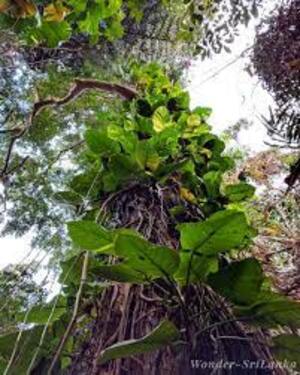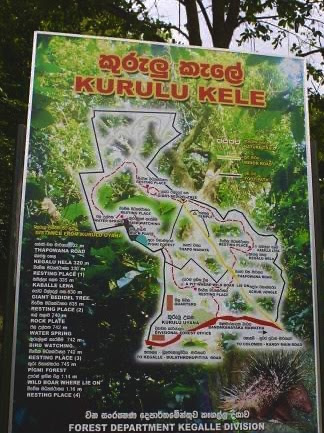“Kurule Kele” – haven for avifauna aficionados – By Arundathie Abeysinghe
 Sri Lanka is a resplendent island abundant in amazing and exciting locations in every corner due to its tropical richness and natural surroundings. Sri Lanka is also blessed with a wide variety of flora and fauna and one of the significant locations for ornithology due to the abundance of bird life and a popular destination for avifauna aficionados. Of the 427 recorded feathered species in the country, 250 are residents and 23 are endemic with a variety of ecological areas such as the hill country to jungles and forests, wet to dry zones as well as low lands. Hence, avifauna aficionados observe and research about these colorful feathered species while basking in the glory of the spectacular vistas…
Sri Lanka is a resplendent island abundant in amazing and exciting locations in every corner due to its tropical richness and natural surroundings. Sri Lanka is also blessed with a wide variety of flora and fauna and one of the significant locations for ornithology due to the abundance of bird life and a popular destination for avifauna aficionados. Of the 427 recorded feathered species in the country, 250 are residents and 23 are endemic with a variety of ecological areas such as the hill country to jungles and forests, wet to dry zones as well as low lands. Hence, avifauna aficionados observe and research about these colorful feathered species while basking in the glory of the spectacular vistas…

Apart from popular Bird Sanctuaries such as Kumana National Park (Sri Lanka’s foremost Bird Sanctuary) Attidiya Bird Sanctuary, Bundala Bird Sanctuary, *Galway’s National Park, Kalametiya Bird Sanctuary and Mannar Bird Sanctuary, there are many Bird Sanctuaries such as *Tangamale Bird sanctuary and “Kurule Kele” Forest Reserve and Bird Sanctuary that are attractive sanctuaries situated off the beaten track.
Situated in *Kegalle town, in close proximity to *Dedigama Kota Vehera (Sutighara Stupa), “Kurule Kele” is located in the lowland wet zone and attracts a large number of visitors on a daily basis.
 The Bird Sanctuary is a haven for bird lovers and home to approximately 92 species of birds including Sri Lanka Jungle Fowl (Gallus), Sri Lanka Hill Myna (Gracula ptilogenys), Sri Lanka Spur Fowl (Galloperdix bicalcarata), Black capped bulbul (Rubigula melanicterus), Ceylon Small Barbet also known as Sri Lanka Small Barbet (Megalaima rubricapillus), Sri Lanka grey hornbill (Ocyceros gingalensis) and Yellow Fronted Barbet (Megalaima flavifrons).
The Bird Sanctuary is a haven for bird lovers and home to approximately 92 species of birds including Sri Lanka Jungle Fowl (Gallus), Sri Lanka Hill Myna (Gracula ptilogenys), Sri Lanka Spur Fowl (Galloperdix bicalcarata), Black capped bulbul (Rubigula melanicterus), Ceylon Small Barbet also known as Sri Lanka Small Barbet (Megalaima rubricapillus), Sri Lanka grey hornbill (Ocyceros gingalensis) and Yellow Fronted Barbet (Megalaima flavifrons).
Although, located in close proximity to a busy metropolis (Kegalle), it is away from the hustle and bustle of city life.
As the Forest Reserve is abundant in avifauna including migrant species throughout the year, it is an ideal location for avifauna aficionados and nature lovers including a site for capturing breathtaking photographs.
The altitude of the land is approximately 580-750 meters and the most distinctive feature of the Forest is the vast “Pus Wela” (Entada polystachya-leguminosae “wela” meaning vine in Sinhala), considered as the largest in South Asia, although it is getting destroyed due to illicit human activities. Apart from “Pus” vine, there are several herbs of medicinal value such as Kudumiris (Toddalia asiatica).
There are approximately 190 types of trees in the Forest, but the most abundant tree is Ceylon Breadfruit also known as Sinhala del or Wal Del (Artocarpus nobilis).
Apart from birds, there are 22 species of mammals in “Kurulu Kele” that are endemic animals of Sri Lanka.
“Kurulu Kele” Forest Reserve and Bird Sanctuary are conserved by the Forest Conservation Department of Sri Lanka. It was declared as a sanctuary in 1941 due to its abundant bird and plant diversity.
The best periods to visit “Kurulu Kele” are from August – September or from December – February when the monsoonal rains are not active and visitors will be able to enjoy the awe-inspiring vistas and abundant birds.

Directions:
Travel up to Kegalle Town via Colombo-Kandy Main Road and from there proceed up to Bandaranayake Mawatha and from this location, it is necessary to enter the Forest Park through the sanctuary monastery to visit “Kurulu Kele”.
Image courtesy – travelwithuma.com
Galway’s Land National Park – montane ecosystem in Nuwara Eliya – By Arundathie Abeysinghe
Ingenious elephant lamp at Dedigama – marvelous craftsmanship of yesteryear
By Arundathie Abeysinghe
Kegalle Jubilee Ambalama – commemoration of a Jubilee – By Arundathie Abeysinghe
Tangamale Bird sanctuary – haven for avifauna aficionados – by Arundathie Abeysinghe







